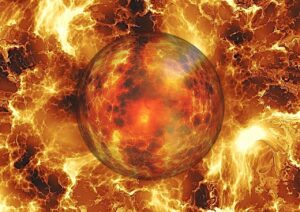10kclimatechallenge
10kclimatechallenge
Are you the next great climate scientist? Awarding $10,000 for the proven reproducible rate of CO2 forcing. (Verified by the UN IPCC)

Climate Predictions
These are all the predictions I found related to this topic in the 3000+ pages of IPCC AR4 and AR5.
The IPCC made many predictions in AR4 and AR5 on current temperatures today stating the temperature would continue to rise because CO2 is still rising.
However, this did not happen as the Earth experienced a warming hiatus.
IPCC’s AR5 explains there was warming hiatus from 1998 to 2012, and “Almost all CMIP5 historical simulations do not reproduce the observed recent warming hiatus. (AR5 Box 9.2 Page 772)
Many deny the warming hiatus occurred but it did as the IPCC makes at least eight direct references to the warming hiatus in AR5. Many references try to explain the cause of it. Note, there was no mention of the warming hiatus in AR4.
So why does it matter if the IPCC models missed the warming hiatus? Well, because model accuracy is fundamental in determining the rate of CO2 forcing according to the IPCC.
The IPCC explains the current method for proving the rate of CO2 forcing and effect on the climate is basically:
- a) detecting climate change
- b) any changes must match the models
- c) find no alternative answer
(AR4 Section 1.3.3 Page 103)
So, you can see B fails if the models fail, and if B fails then C fails as our understanding of the climate process must not be fully understood as they are not accurately represented by the climate models.
For B, the IPCC in AR5 goes on to tell us they have an “incomplete understanding and imprecise models of the climate system”. (AR5 Section 12.1 Page 1034)
More specifically they note some understanding of process needs to improve as well as adding missing processes. AR5 FAQ 1.1 Page 140 (121)
However, the IPCC claims their models “continued to be developed and improved since AR4” where they note biogeochemical cycles have been added to the models making them “Earth System models” (AR5 Chapter 9 Executive Summary Page 743)
AR4 told us this could not happen. So, what caused the warming hiatus? This subject draws much discussion in AR5.
In AR5 the IPCC puts it this way by stating there are three uncertainties that limit the precision of future predictions. 1 – Internal variability, 2 – Uncertainty of past present and future forcing, 3 – Responses of climate system to specific forcing agents. (AR5 Section 11.1.3.3 Page 978)
I think you are seeing the primary suspect for the warming hiatus focuses around the first one listed, internal variability.
Here the IPCC states they have “medium confidence” that the difference found between the models and the warming hiatus were caused by internal variation, forcing errors and overestimating greenhouses gases effect. (AR5 Chapter 9 Exec Summary Page 743)
In AR5 the IPCC goes on with “medium confidence” the warming hiatus was caused by internal variability and some models maybe overestimating their responses to greenhouse gases. (AR5 Box 9.2 Page 772)
Again, in AR5 the IPCC has medium confidence internal variability makes understanding the climate much more complex as several components exhibited multiple states like El-Nino. (AR5 Executive Summary Page 121)
They go on in AR5 that other possible errors noted are forcing errors and models “overestimating the response to increasing GHG and other anthropogenic forcing”. (AR5 Box 9.2 Page 772)
The IPCC tells us much is yet to be learned as in AR5 they state it is important to understand what caused past climate change to improve their understanding of internal variability and natural forcing. (AR5 Section 10.7 Page 917)
Despite AR4’s confidence that internal variability was a known quantity AR4 also warned us about internal variability as well stating here uncertainty comes from internal variability is that the record has little data of past internal variability. (AR4 Section 9.4.1.8 Page 693)
The IPCC in AR4 made other contradicting statements in dealing with internal variability stating back then in 2007 there were several difficulties.
For example, they state the components of the climate are not on the same time scales, and we need information for decades or longer to understand them. They state here today the record is too short which is a very important area where data is lacking. (AR4 Section 9.1.2 Page 668)
However, like all these reports there are many contradictions. For example, here in AR5 the IPCC defends their understanding of internal variability and models performance.
For example, the IPCC claims it is “virtually certain” internal variability did not cause alone global warming since 1951. (AR5 Section 10.3.1.1.3 Page 885)
The IPCC states they doubt internal variability has any real role in changing our climate. Here they state any observed change cannot be duplicated by models simply adding natural forcing or natural variability (AR5 FAQ 10.1 Page 894)
AR5 goes on to list the “likely” temperature increase for each known forcing giving us a total.
For example, greenhouse gases likely increase to be between –0.6°C and 0.1°C. Then natural forcings likely at –0.1°C and 0.1°C, then internal variability likely at –0.1°C and 0.1°C. (AR5 Chapter 10 Executive Summary Page 869)
They note to note with “high confidence” the next 15 years will be higher than warming hiatus period. (AR5 Box 9.2 Page 772).
The IPCC claims during the warming hiatus their models were within the range of predictions for future temperatures, though admitting less than the average of all model predictions. (AR5 Section 1.3.1 Page 132)
There are many challenges to models other than just internal variability like future greenhouse gases and natural variability
For example, here the IPCC list internal variability, future greenhouse gases, and natural variability as challenges to models. (AR5 Section 12.1 Page 1034)
AR5 admits “incomplete understanding and imprecise models of the climate system” (AR5 Section 12.1 Page 1034)
Here AR5 goes on to express more fundamental questions about model’s reliability to predict as the IPCC explains they really don’t have a standard to deem a model reliable because the measured climate and model projection will never match exactly. (AR5 Section 9.2.3 Page 755)
Last AR5 again tells us if all the models and all the data happen to match, they can never be certain because of internal variability. (AR5 Section 10.2.1 page 873)
To me it is clear that in AR5 the IPCC realizes more climate process have been discovered needing to be understood since the time of AR4 seven years earlier. In 2007 the IPCC was convinced the models, all the models, were accurate as they had the climate process figured out to a small percentage.
For example, AR4 expressed confidence that there were uncertainties in models representing feedbacks, but claim models’ simulation of the current and past climate increases the IPCC’s confidence they are representing these uncertainties. (AR4 Section 9.6.1 Page 718)
The feedback mentioned the most in AR5 for the cause of the warming hiatus is internal variability. AR4 does speak of internal variability much as at the time they believed it was well understood.
For example, the IPCC claims in AR4 that models show it is “unlikely” internal variability could null out the effects of greenhouse gases. (AR4 Section 9.2 Page 670)
AR4 goes on to explain internal variability alone is too small to change any detected observations of the climate. (AR4 Section 9.1.2 page 667)
The IPCC in AR4 does focus some on El Nino as a source of internal variability believing it is not a major factor globally. They note there are no known modes of internal variability to cause wide spread universal warming. They note El Nino can lead to temporary global average warming with some areas cooling. (AR4 – Page 727 Section 9.7)
The IPCC goes on to state the climate process of internal variation like El Nino can cause the global mean temperature to alter for a short time. However, even though they do not last long they still add questions when considering what we are learning about delayed responses and more (AR4 FAQ 9.2 Page 702)





So Many Temperature Predictions
When it comes to predicting future temperatures, the IPCC downplays this ability from AR4 to AR5.
in AR4 the IPCC states there is no evidence of any comparable rapid increase in global average temperature in the last 50 million years. (AR4 FAQ 6.2 Page 465)
However, in AR5 this changes some with statements like this where the IPCC admits there is an ‘uncertainty range’ when it comes to predicting temperature because uncertainties combine with natural year-to-year climate variability (AR5 FAQ 1.1 Page 140)

The Prediction Chapter
Many More Predictions in AR4 than AR5, Why?
This section highlights all the important climate predictions described in the UN’s IPCC assessment reports, AR4 and AR5.
AR4 and AR5 are the most complete and current climate information out there today, a road map for future generations. However, they are not the easiest reads because information on any particular subject is found throughout the 3000+ pages of these reports.
I find it interesting from AR4 to AR5 climate questions have grown by several fold while predictions from the IPPC are less in AR5 than they were made in AR4. Why?
One reason for this increase in questions and less predictions comes from the fact many predictions the IPCC made in AR4 were missed. Including major predictions like the warming hiatus.
However, all this is not bad news as the IPCC is really learning more about the climate and learning more about the complex processes it holds.
This is just another example that the climate is not “figure out” and why the next generation of climate activists and scientists are needed more than ever!
Inspiring the next generation
You might be on the same path?
Sharing what I have learned in my 35 years of being a “climate activist”.
Be an informed climate activist or maybe even the next great scientist.
AR4 and AR5 are road maps for the next generation of climate scientists.
I am awarding $10,000 for the proven rate of CO2 forcing to the next great scientist of our time.
Review of the IPCC AR4 and AR5
Collection of 9200 peer-reviewed climate studies. This is the science with 100s of questions, contradictions, missed predictions, areas lacking data, and more.
Following the Science
Become an informed climate activist!
10kclimatechallange
All the Chapters
My Personal Climate Journey.
35 years and counting. You may be on the same journey.
Review of IPCC AR4 and AR5
Why AR4 and AR5 are so important.
Theory Chapter
Breaks down CO2 forcing and why models are important.
Temperature Chapter
What is warming? Entire earth? Oceans? Surface? What to know.
Model Chapter
Why use models? How are they doing?
Ocean Chapter
Role of the world's oceans that stores over 90% of Earth's heat.
Atmosphere Chapter
Is the atmosphere cooling or warming the earth?
Gases Chapter
Focus on CO2 and other greenhouse gases.
Civilization Chapter
Looking at past climate change affect on previous civilizations.
Question Chapter
Summary of every important question I found in AR4/AR5. More than 150 of them.
Prediction Chapter
Summary of every important prediction I found in AR4/AR5.
What is the IPCC?
UN’s IPCC Assessment Reports 4 and 5 (AR4 2007 and AR5 2014). These UN reports include over 600 authors from 32 different countries assessing 9,200 peer-reviewed studies so they are the all-inclusive on the current state of climate science putting out new reports every seven or so years.
AR5 explains the United Nation’s IPCC was created in 1988 to provide world governments with “clear information on the state of today’s climate science as well as potential impacts, and options for adaptation and migration based on regular assessments”. (AR5 Section 1.2.1 page 123)

Weather versus Climate
Is the weather or the climate easier to predict?




